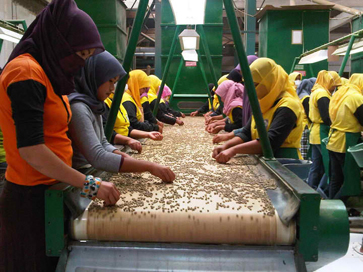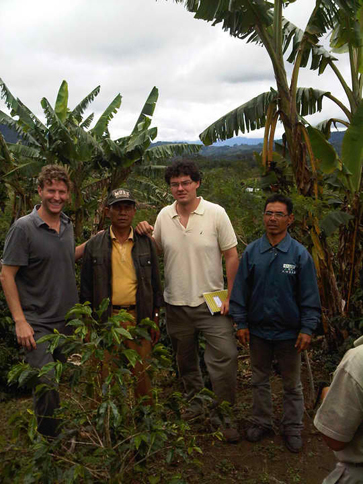 Over the past 15 years, Fair Trade Labeling Organizations International (FLO) and Fair Trade labels have played an important role in driving consumer awareness and demand for socially and environmentally sourced products. For years, FLO/Fair Trade have been flag bearers for small-holder empowerment and have pushed a desperately needed agenda. But today, serious questions loom about the relevance of Fair Trade organizations and labels. The debate revolves around Fair Trade’s impact—or lack thereof—at the base of the pyramid (BoP), and its ability and desire to accomplish its original mission.
Over the past 15 years, Fair Trade Labeling Organizations International (FLO) and Fair Trade labels have played an important role in driving consumer awareness and demand for socially and environmentally sourced products. For years, FLO/Fair Trade have been flag bearers for small-holder empowerment and have pushed a desperately needed agenda. But today, serious questions loom about the relevance of Fair Trade organizations and labels. The debate revolves around Fair Trade’s impact—or lack thereof—at the base of the pyramid (BoP), and its ability and desire to accomplish its original mission.
A recent investigation by a team of BoP supply chain experts from I-DEV International uncovered some critical weaknesses within three Fair Trade supply chains. For a month, the team traversed jungles and mountains and lived in remote villages of Sumatra, Indonesia. Their mission was to gain a firsthand understanding of the local dynamics, livelihoods, and day-to-day challenges of Fair Trade farmers who produce much of the Indonesian coffee, cassia (sold as cinnamon), and black pepper that the developed world consumes. The team left Sumatra after a harsh reality check for Fair Trade subscribers, but they also identified a few clear opportunities to redesign Fair Trade and revive its relevance.
 I-DEV’s team met with nearly 100 farmers, collectors, and co-op managers. The resounding observation was that while many of the farmer co-ops have reinvested their Fair Trade premiums and profits to become highly sophisticated, professionally run “businesses” with well-equipped processing and packing plants, the majority of farmers were disconnected from this process, and virtually all of them saw their co-ops as just another external business that paid a collector (intermediary) to buy their harvest. Farmers felt no sense of ownership in the co-ops, and many admitted that they were members of several. The most disconcerting observation was that not a single farmer I-DEV spoke with could say whether their life had improved financially or otherwise since the arrival of Fair Trade.
I-DEV’s team met with nearly 100 farmers, collectors, and co-op managers. The resounding observation was that while many of the farmer co-ops have reinvested their Fair Trade premiums and profits to become highly sophisticated, professionally run “businesses” with well-equipped processing and packing plants, the majority of farmers were disconnected from this process, and virtually all of them saw their co-ops as just another external business that paid a collector (intermediary) to buy their harvest. Farmers felt no sense of ownership in the co-ops, and many admitted that they were members of several. The most disconcerting observation was that not a single farmer I-DEV spoke with could say whether their life had improved financially or otherwise since the arrival of Fair Trade.
Surprisingly, many farmers were completely oblivious about where their products were sold, how much they sold for, or what they were used for. When one of I-DEV’s team pulled a chai tea bag from his pocket and asked a group of cassia farmers if they had ever seen a product that contained cassia (cinnamon), shockingly, no one in the group ever had. To them, cassia was just tree bark, and no one had ever explained how the rest of the world used it. In fact, virtually none of the farmers from any of the three supply chains knew how much the co-op received or how much the collector (the local elected representative of the co-op/ intermediary) earned compared to their own earnings. (This is Fair Trade 101!) Many could not recall the last time they received any training or saw any of the co-op training staff. For them, the only tie to the co-operative was the local collector. One collector even physically threatened a farmer for talking to I-DEV’s team.
Are you enjoying this article? Read more like this, plus SSIR's full archive of content, when you subscribe.
In order to remain relevant and reclaim its place as innovation leader, Fair Trade must remember and re-engage the individual farmer. It can do this by restricting certification so that it only goes to organizations that truly empower and forward-integrate farmers—teaching them to move up the supply chain and ensuring that an increasing amount of the value added stays at the farmer level. More specifically, Fair Trade might establish a tiered certification system, something like LEED certification. It could also use individualized scorecards to evaluate organizations based on continuous improvement, measuring key factors such as shortened supply chains (I-DEV found as many as 5 to 7 links along supply chains before exportation, which is ridiculous!).
Finally, any redesign of the Fair Trade labels must include a quality component. Beyond BoP impact, poor bean quality and flavor is hands-down the biggest criticism of Fair Trade. Meanwhile, Direct Trade has emerged as a fast-growing and highly profitable niche of the specialty coffee market—fueled in part by dissatisfaction with FLO’s social and product shortcomings. This premium coffee has sold for as much as $120/lb and undergoes rigorous flavor testing, much like wine does. If Fair Trade coffee quality doesn’t improve, the Direct Trade movement—led by Stumptown, Counter Culture, and Intelligentsia micro-roasters—will quickly become a growing threat.
Read SSIR’s case study “The Problem with Fair Trade” here.
Support SSIR’s coverage of cross-sector solutions to global challenges.
Help us further the reach of innovative ideas. Donate today.
Read more stories by Patricia Chin-Sweeney & Jason Spindler.

